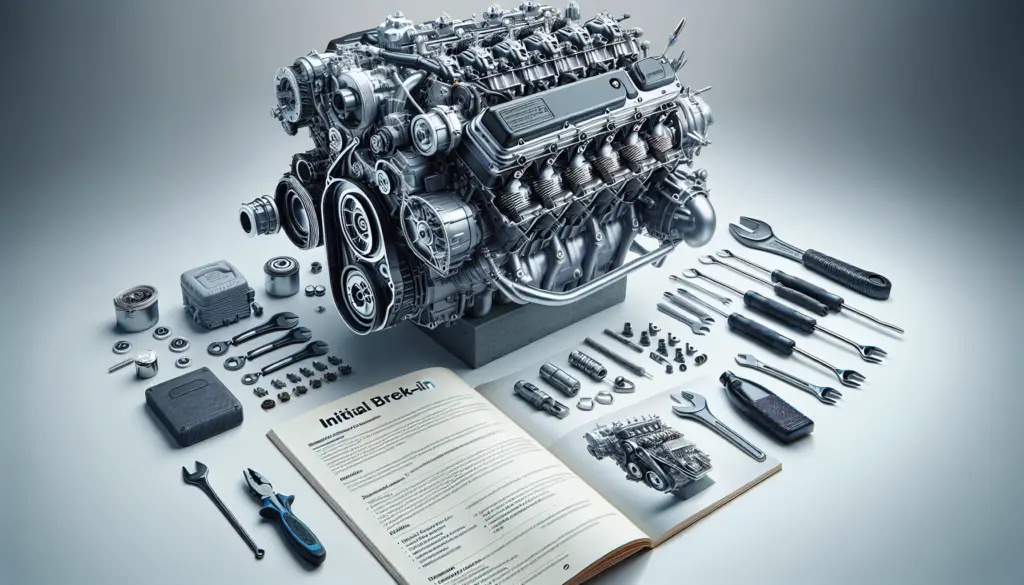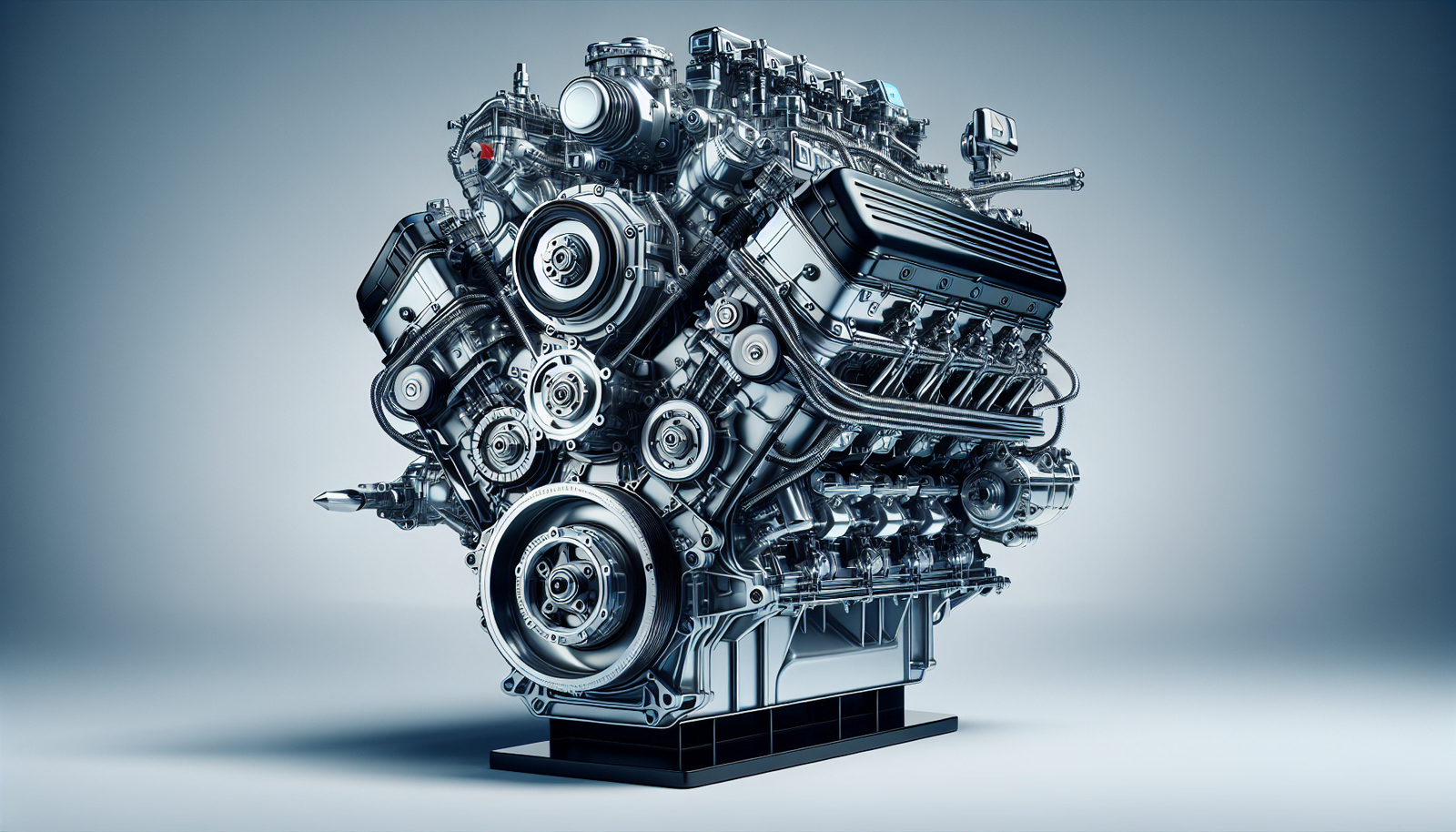You’re the owner of a shining brand new boat and one of those lucky souls who get to enjoy a breezy ride across the water. Good on you! But there’s one hurdle you need to conquer before relishing your ocean or lake conquests – breaking in your boat’s new engine. While it may sound like a daunting task, breaking in a new engine properly can not only enhance the longevity of your prized possession but also its performance. The article, “What Are The Steps To Properly Break In A New Boat Engine?” will guide you meticulously through the entire process for a smooth sailing experience.

Understanding the Importance of Break-In Period
The break-in period of a boat engine, crucial as it is, can sometimes be overlooked by many boat owners, especially the newbies. You may find this term mentioned in your owner’s manual. But what does it mean? And why is it important?
Why break-in period matters
The break-in process is essentially the initial few hours of running your new engine. During this time, the engine parts, particularly the pistons and cylinders, are learning to work together smoothly. This is a critical time where the parts are wearing in and conforming to each other’s contours and imperfections. If done right, it helps to ensure optimal performance, efficiency, and longevity of your boat engine.
Potential issues if skipped
If you neglect the break-in process, you’re setting yourself up for potential issues down the road. This could range from engine inefficiency, poor fuel economy, to premature part failure, and hefty repair bills.
Implications on boat engine longevity
Neglecting the break-in process can detrimental to the lifespan of your boat engine. If the parts don’t have the chance to properly adjust to each other, it could lead to premature wear and tear, reducing the engine’s lifespan.
Essential Tools and Materials
To check and prep your engine, you will require several essential tools and materials besides your standard tool kit.
Quality grade engine oil
No matter what type of engine you have, a quality grade engine oil is vital. You should always choose the type of engine oil recommended by your engine manufacturer which will be stated in your owner’s manual.
Coolant
Coolant helps to remove excess heat from your engine, protecting it from overheating. You should always have it handy and check its level before and after running your engine, particularly during the break-in period.
Owner’s Manual
Your owner’s manual is your best friend during the break-in period. It will have specific instructions for your particular engine that should be followed to a tee.
Fuel
Quality fuel is necessary for optimal engine performance. Always ensure your boat’s fuel system is filled with clean, fresh fuel.
Checking and Prep before First Run
Before you start up your new boat engine for the first time, there are several things you need to check and prepare.
Inspection of Engine
Before starting, visually inspect your engine to make sure everything appears to be properly installed and securely fastened. Double check connections such as fuel, oil, and coolant lines.
Oil and Coolant Levels
Check the oil and coolant levels. These should be filled to the manufacturer’s recommendation. Over or under-filling can cause problems.
Fuel quality check
Always start with clean, fresh fuel. Dirty or old fuel can damage your engine and impair performance.
Securing all the connections
Pay meticulous attention to wires and connections. Loose or disconnected wires can cause problems right from the start.
The Initial Startup
Once everything is checked and prepared, you’re ready for the initial startup of your boat engine.
Engine priming
This depends on your type of engine. If required, prime the engine by pumping fuel into it until it is ready to start.
First starting sequence
Turn on the ignition key, but don’t yet fully engage the starter. Allow the engine to conduct its own system check if it’s equipped with this feature. Once that’s complete, start the engine.
Initial observations and signs to look for
When you first start your engine, listen and look for signs such as unusual noises, smoke, or the smell of burning oil or fuel. These could be indications of problems that need to be addressed immediately.

First One-Hour Operation
After the initial startup, you’ll let your engine run at a moderate speed for the first hour.
Recommended RPM level
The appropriate RPM will depend on your engine model. Don’t maintain the same RPM for the full hour, this allows the engine parts to wear in at different loads.
Monitoring engine temperature
Keep an eye on the engine temperature. If it’s running too hot or too cool, there’s likely an issue that needs to be addressed.
Increasing and decreasing speed gradually
Gradually increase and decrease your speed throughout this first hour to allow all the parts to get used to working under different loads.
Post One-Hour Checking
After the first hour, you’ll want to check a few things again before proceeding further.
Engine shut down process
Ensure this process is done correctly. This usually includes returning the throttle to idle position and turning off the ignition key, but check your owner’s manual to be sure.
Post-run checks
Once the engine is comfortably off, recheck fluid levels and inspect the engine for any possible leaks or any signs of distress.
Oil and coolant level observations
If your oil or coolant levels have dropped significantly, that’s not normal. Check for leaks and top up as necessary.
Second Hour of Break-In Process
During the second hour, you can gradually increase the engine load.
Recommended speed variations
Variety is the key here. Change your engine’s speed frequently and don’t keep it under too heavy a load for more than a few minutes.
Monitoring vibrations or sounds
Unusual vibrations or sounds are a signal that something’s not quite right. If you notice anything out of the ordinary, stop the engine and investigate.
Running at different RPM levels
Running your engine at different speeds allows the parts to settle in under varying amounts of load.
Proceeding with Following Hours
After the initial sessions, continue to use your engine, increasing the load gradually.
Gradual increase in speed
At this stage, faster speeds and higher loads can be introduced, but continue to vary the RPM and don’t let the engine labour for extended periods.
Multiple RPM level operations
Try to expose your engine to the whole spectrum of possible RPM levels. This will help the parts to wear in at different speeds and loads.
Continual observation of engine sound and vibration
Even as you go through the extended break-in period, keep a very close eye and ear on your engine. If anything seems strange, stop and figure out what’s going wrong.
Post-Break-In Checks
Once the break-in period is complete, there are a few more checks before you can give your engine a clean bill of health.
Inspection of engine
Give your engine a thorough inspection. Look for any signs of leakage, misalignment, unusual wear, or anything else that might indicate a problem.
Oil and coolant check
Check these fluid levels one more time. If they’ve remained steady through the break-in period, that’s a good sign.
Reviewing any sign of abnormal wear and tear
If there are any signs of abnormal wear, address them immediately.
Maintenance After Break-In Period
Your engine should now be broken in and ready to give you years of reliable performance. But remember, ongoing maintenance is crucial.
Regular servicing schedule
Even though your engine is brand new, a regular servicing schedule is crucial to maintaining its health and longevity.
Signs of potential issues to monitor
As you continue to use your boat, always stay alert for any unusual sounds, vibrations, or performance changes that could hint at issues.
Long term maintenance tips
Keep to your manufacturer’s recommended maintenance schedule. This will not only keep your engine running smoother and longer but will also uphold any warranties your engine might have.
Well there you have it. As you can see, the break-in period is not something to skip over. It is a crucial first step to setting your new boat engine up for success and ensuring it has a long and problem-free life. With this guide, you should have all the knowledge you need to make sure your engine’s break-in goes smoothly. So, go out there, start your engine and enjoy your boating!


[…] out a sea trial is essentially taking the engine for a test […]